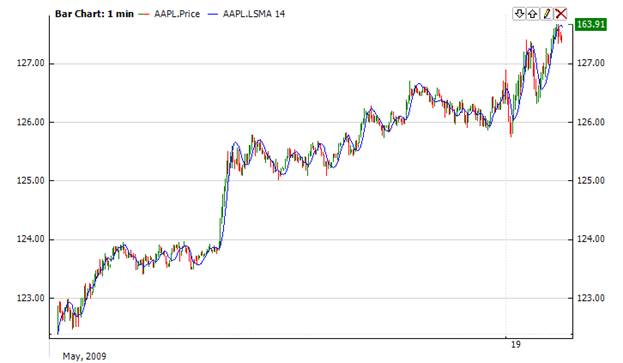Least Squares Moving Average |
The Least Squares Moving Average (Lsma) first calculates a least squares regression line over the preceding time periods, and then projects it forward to the current period. In essence, it calculates what the value would be if the regression line continued.
Lsma gives trading signals like any moving average – if Lsma line crosses price from above it is a buy signal and vice versa.


where x is the price, t is the time of this price, n is the period


To initialize Lsma indicator, use one of the following constructors:
Lsma – sets default values: period = 14, useTime = false.
Lsma(Int32, Boolean) – sets period and useTime flag. If this flag is true, to calculate the indicator values, time (in 100 nanoseconds) will be used and you need to use method Add() with time. If this flag is false, a number of data points will be used for calculation. In this case you can use method Add() without time.
Lsma(TimeSpan, Boolean) – sets time period and useTime flag.
Use
LSMA - property to get current value.
1// Create new instance 2Lsma lsma = new Lsma(20, false); 3 4// Number of stored values 5lsma.HistoryCapacity = 2; 6 7// Add new data point 8lsma.Add(CurrentPrice); 9 10// Get indicator value 11double IndicatorValue = lsma.LSMA; 12// Get previous value 13if (lsma.HistoryCount == 2) 14{ 15 double IndicatorPrevValue = lsma[1]; 16}